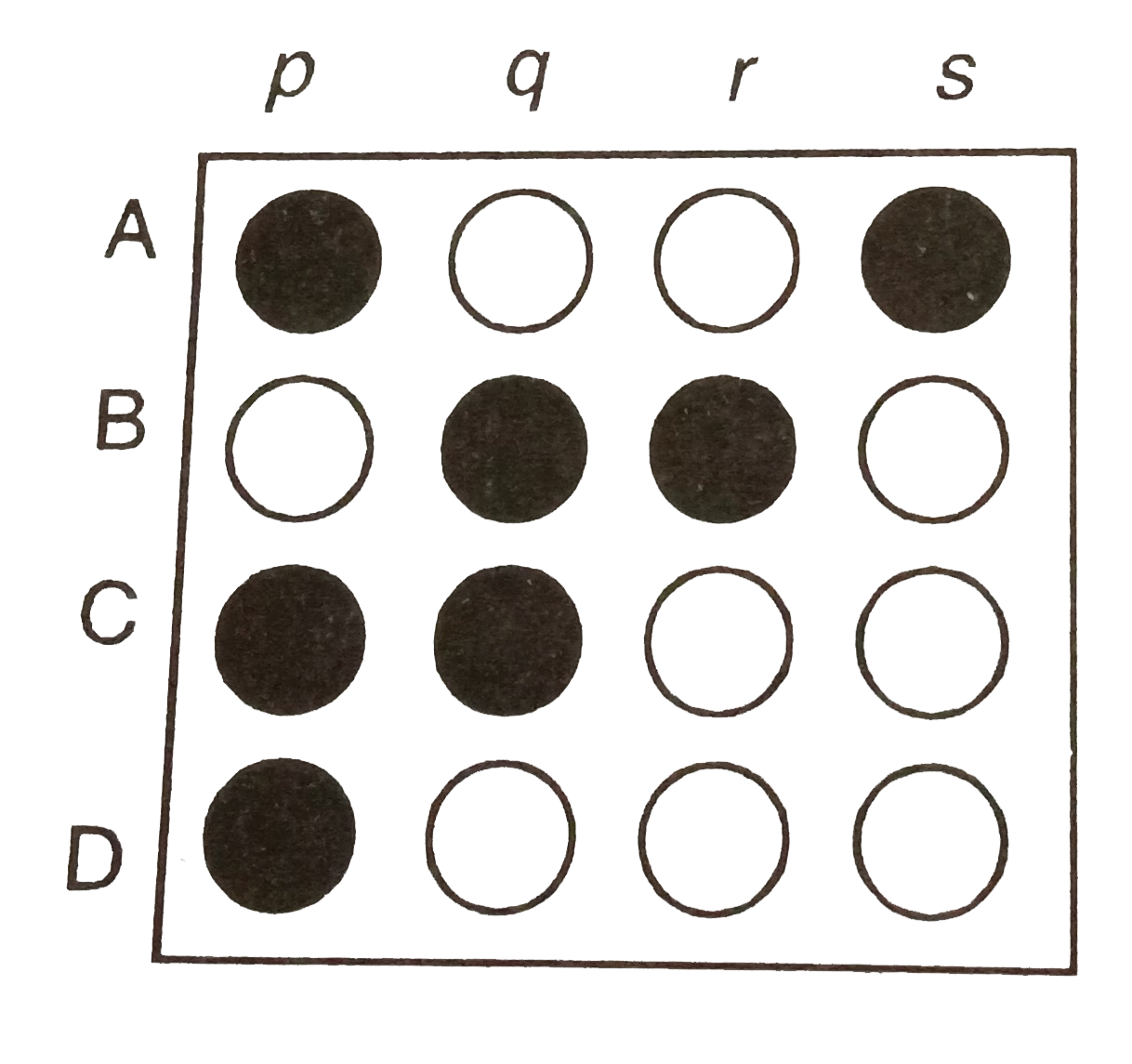Column-IColumn-II(a)Reaction connot be completed in finite time (p)0(b)Reaction may be elementary(q) 1(c)As reaction proceeds time required forreducing to half of the amount keeps on decreasing(r)0.75(s) 5
The correct Answer is:(a-q,s);(b-q);(c-p,r)
Topper's Solved these Questions
- CHEMICAL KINETICSBOOK - GRB PUBLICATIONCHAPTER - CHEMICAL KINETICSEXERCISE - Subjective Type
63 Videos
- CHEMICAL KINETICSBOOK - GRB PUBLICATIONCHAPTER - CHEMICAL KINETICSEXERCISE - Comprehension type32
1 Videos
- CHEMICAL BONDING-IBOOK - GRB PUBLICATIONCHAPTER - CHEMICAL BONDING-IEXERCISE - Subjective Type
120 Videos
- COORDINATION COMPOUNDSBOOK - GRB PUBLICATIONCHAPTER - COORDINATION COMPOUNDSEXERCISE - SBJECTIVE TYPE
98 Videos
Similar Questions
Assume that the reaction considered here is homogeneous gaseous reaction A(g)→B(g)
Column-I(containing order of the reaction)Column-II(containing properties of the reaction)(a)Order less than 1(p)Reaction will not undergo 100% completion in finite time interval(b)Order equal to zero(q)Rate of reaction will remainuniform as long as reactant is remaining(c)Order greater than or equal to 1(r)Rate of reaction may increase as the reaction proceeds(s)Reaction can never be elementary
View SolutionMatch the Column-I with Column-II :
Column-IColumn-II(a)Rate of reaction(p)May be fractional(b)Rate of constant(q)Whole number(c)Order of reaction(r)Indepdent of temperature(d)Molecularity of raction(s)Increase with temperature
View SolutionMatch the entries of column I with appropriate entries of column II. Each entry in column I may have one or more than one correct option from column II. If the correct matches are A-p, s , B-r , C-p, q , D-s, then the correctly bubbled 4×4 matrix should be as follows :
Column IColumn II(A)Rate constant of an exothermic reaction(p)increases with increase of themperature.(B)Rate constant of an endothermic reaction(q)decreases with increase of temperature.(C)Equilibrium constant of an exothermic reaction(r)not affected by adding catalyst.(D)Equilibrium constant of an endothermic reaction(s)not affected by change of initial concentration.
View SolutionColumn IColumn II(a)Work(p)WF(b)Kinetic energy(q)mgh(c)Potential energy(r)12mv2(d)Displacement(s)F×S
View SolutionColumn - I and Column - II contains four emtries each. Entries of Column -I are to be matched with some entries of Column - II . One or more than one entries of Column -I may have the matching with the same entries of Column - II.
column-Icolumn-II(A) Chemisorption(P) Not specific and decreases with temperature (B) physisorption(Q)sepecific and increases with temperature(C) Desorption of a solute on liquid surface(R) Increases the surface tension of the liquid (D)Adsorption of a solute on a liquid (S) Decreases the surface tension of the liquid
View SolutionColumn - I and Column - II contains four emtries each. Entries of Column -I are to be matched with some entries of Column - II . One or more than one entries of Column -I may have the matching with the same entries of Column - II.
column-Icolumn-II(A) Chemisorption(P) Not specific and decreases with temperature (B) physisorption(Q)sepecific and increases with temperature(C) Desorption of a solute on liquid surface(R) Increases the surface tension of the liquid (D)Adsorption of a solute on a liquid (S) Decreases the surface tension of the liquid
View Solution[B] Match the solutions in Column-I with their nature in Column-II :
Column-IColumn-II(a)Benzene + toluene(p)Non-ideal solution(b)Ethanol + water(q)Ideal solution(c)Benzene + chloroform(r)ΔHmix>0(d)Carbon tetrachloride + chloroform(s)ΔHmixing=0
View SolutionColumn-IColumn-II(a)If the activation energy is 65 kJ then howmuch time faster a reaction proceed at25∘Cthanat0∘C(p) 2(b)Rate constant of a first order reaction is0.0693−1minif we start with20molL−1it is reduced to2.5molL−1in how many minutes(q) 0(c)Half lives of first order and zero orderreactions are same ratio of rates at the start of reaction is how many times of 0.693(r) 11(d)The half life periods are given[A](M)0.06770.1360.272t1/2(sec)240480960order of the reation is(s)30
View SolutionHere each question contains statements are given in two columns which have to be matched. Statements in Column I are labelled as A,B,C and D whereas statements in Column II are labelled as p,q,r and s. The answer to these questions are to ne appropriately bubbled as illustrated below in the following example.
If the correct matches are A−p,A−s,B−q,B−r,c−p,c−q,andD−p then correctly labelled 4×4 matrix should look like

Column-IColumn-II(A)Rate of reactionpmol L−1s−1(B)First order reactionqs−1(C)Zero order reactionrmol−1L s−1(D)Second order reactionsDecomposition of H2O2
View SolutionColumn-IColumn-II(a)A+B→C+Dr=k1[A][B](p)Unit of rate constant possess concentration unit(b)A+B→C+Dr=k2[A][B](q)Rate constant for the reaction of both the reactants are equal(c)A+B→C+Dr=k2[A]0[B]0(r)Rate of consumption of at least one of the reactants is equal torate of production of at least one of the product(d)2A+B→2C+3Dr=k3[A]0[B]0(s)If both reactants are taken instoichiometric ratio half life for both reactants are equal
View Solution
